The Hoover-Minthorn House Museum Garden Welcomes Its First Harvest!
The Bountiful Harvest of the Hoover-Minthorn House Museum
By Amaya Eckersley, Director
The brand-new Hoover-Minthorn House Museum kitchen and apothecary garden has welcomed its first vegetable harvest–summer squash!
When Herbert Hoover lived at the Minthorn property in Newberg, Oregon, one of his chores was to water the garden. Due to the heavy lifting and manual labor involved, this was a chore that was seen as better-suited for men and boys. However, young Herbert Hoover was not interested in the garden as a child. When Burt Brown Barker was seeking Hoover and Mary Minthorn’s input on the museum, neither of them could provide much information other than where the garden was located.
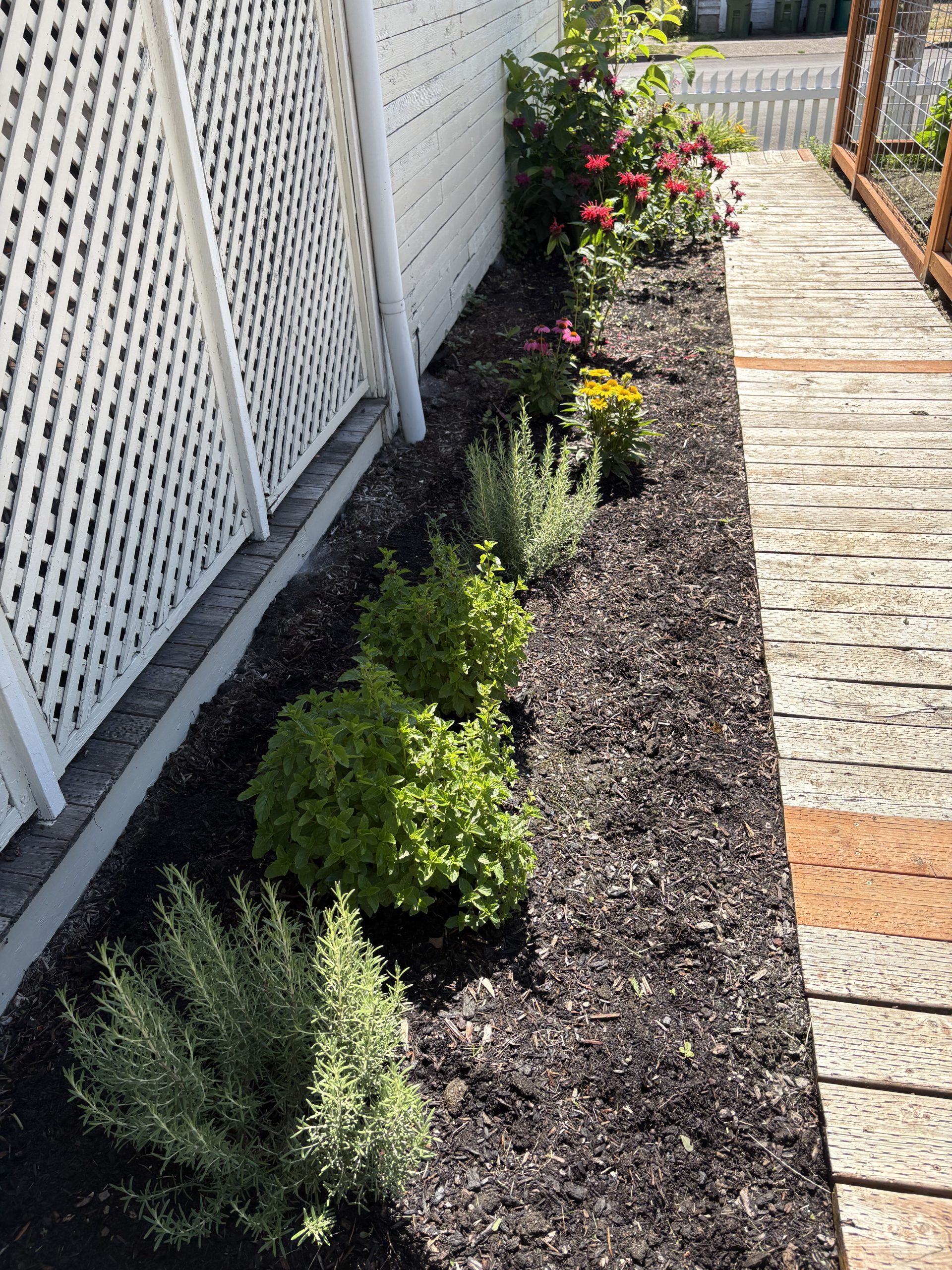
A row of flourishing medicinal herbs in the Hoover-Minthorn House Museum garden space. Pictured: rosemary bushes, lemon balm bushes, echinacea (also known as coneflower), and various pollinator-friendly wildflowers.
As written in a previous blog post, we decided to model the garden using a standard 19th century garden layout adjusted for the modern needs that would allow for us to care for the garden more easily. The garden is now built with four raised beds and a fence around the perimeter, as well as some additional plants outside of the fence. But what exactly is in the garden beds?
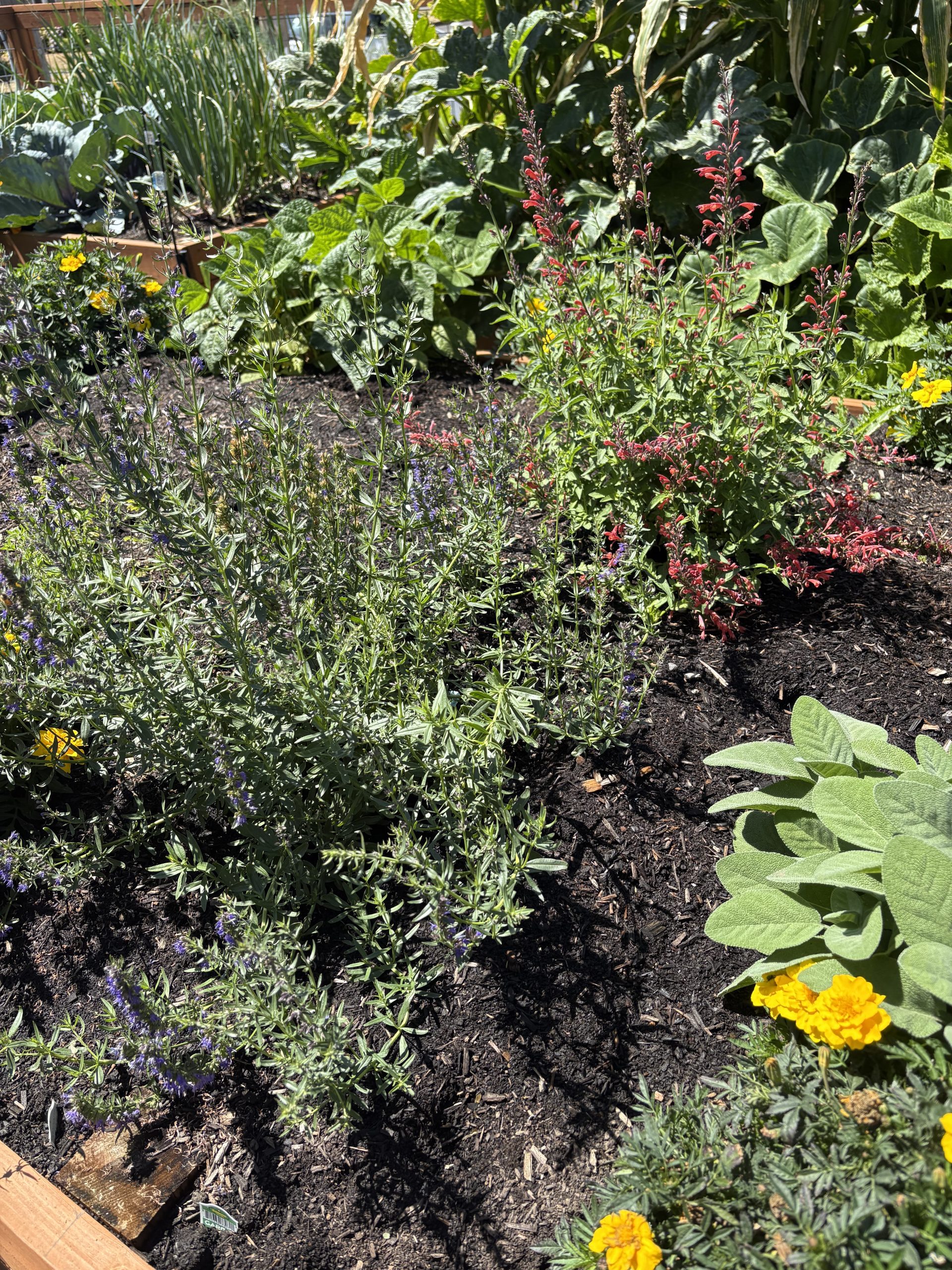
More herbs and flowers, companion planted with carrots. These herbs, especially the sage, are loving the Newberg summer.
The garden combines both kitchen and apothecary needs, with plants laid out according to companion planting practices. One bed includes the companion plants corn, beans, and squash–which we just harvested! Other beds with companion plants include carrots and garlic, cabbage, onion, and dill, and potatoes, bush beans, and cilantro. All of the beds are lined with marigolds to help keep various pests out of the garden. As you can see, the plants are loving their companions, and we’re now reaping the benefits of a massive squash harvest!
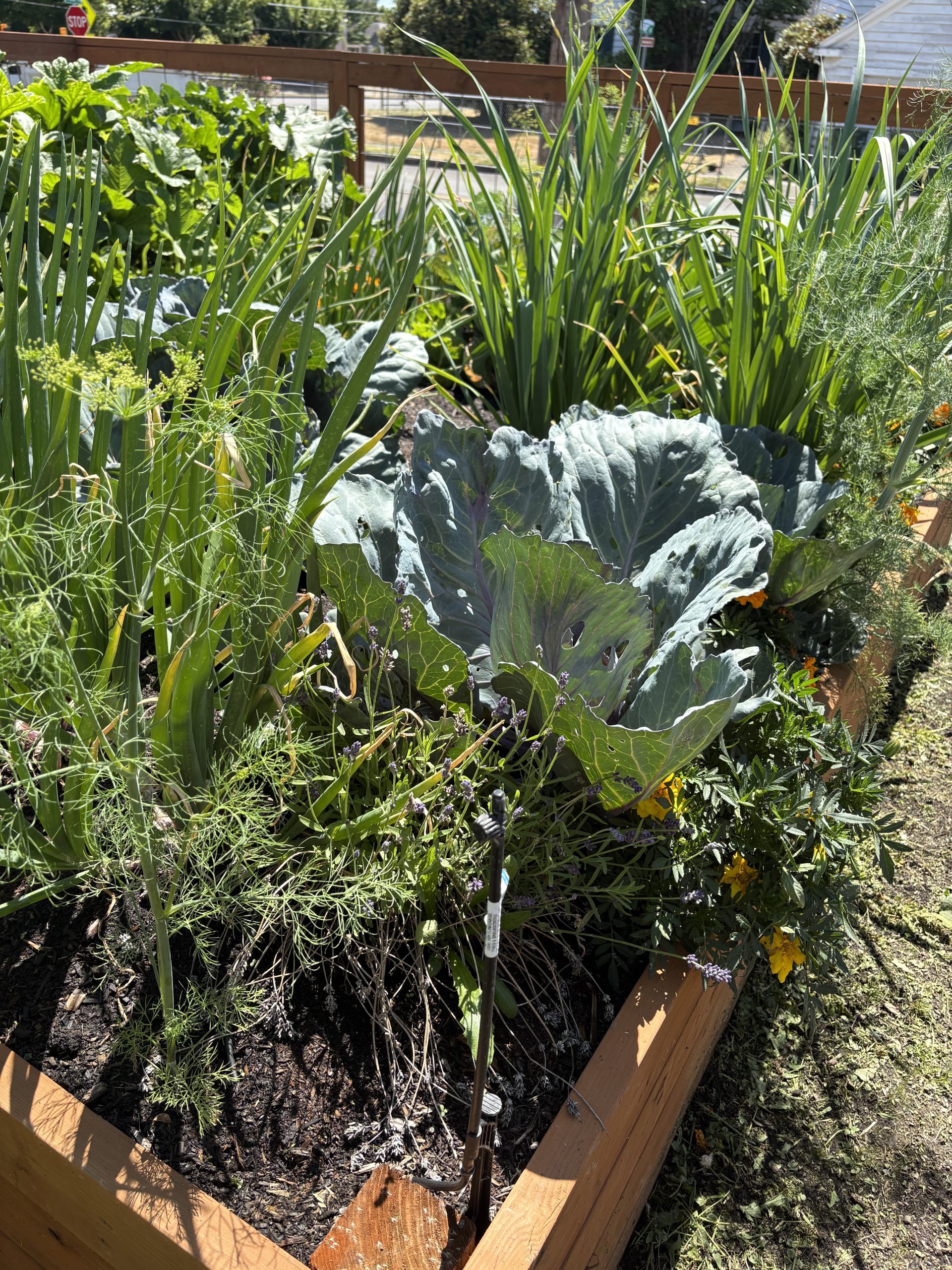
Cabbage companion-planted with onion and dill.
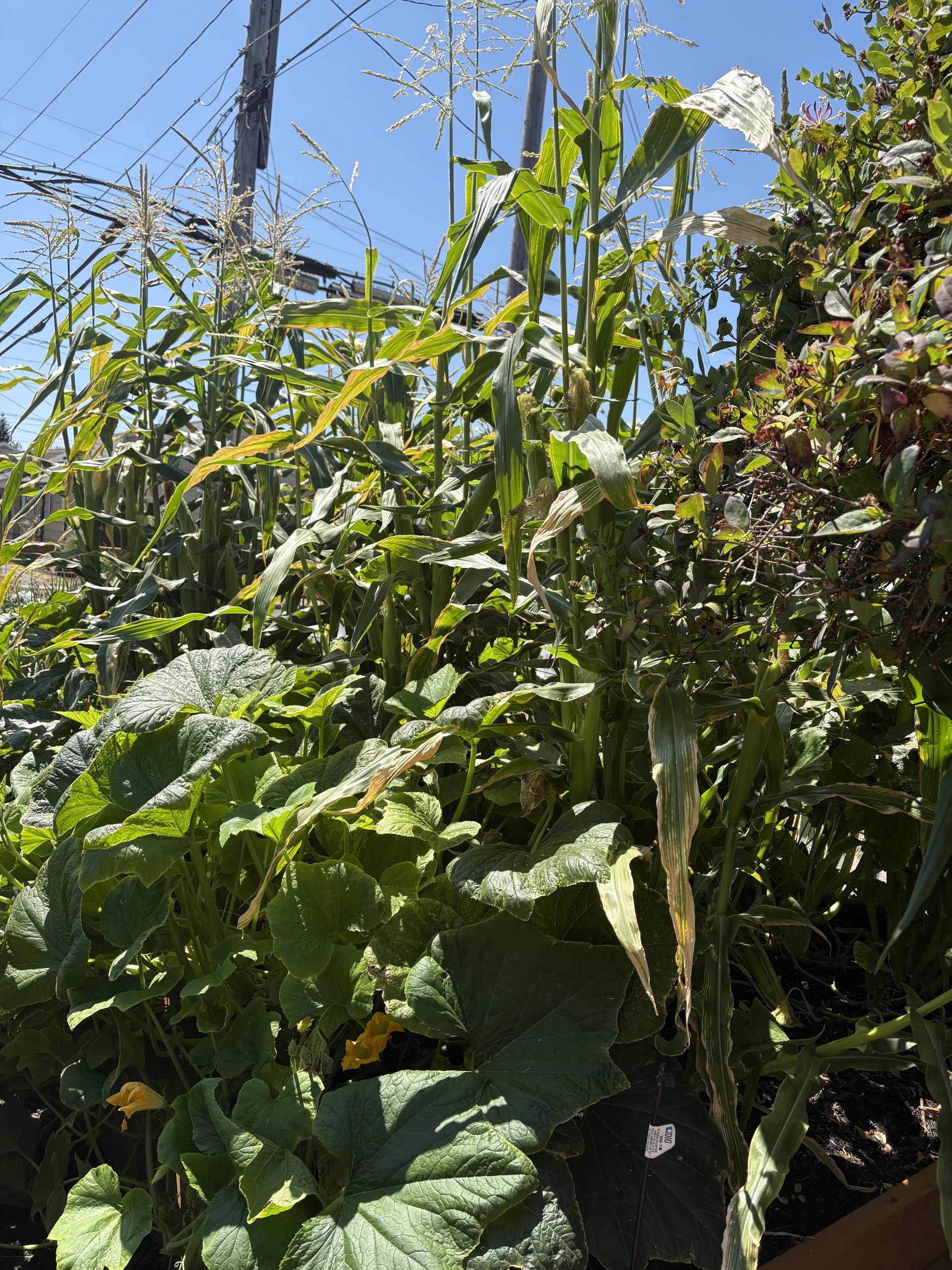
The corn, squash, and beans in this garden bed are doing wonders for each other!
Typical for 19th-century companion planting, the summer squash was planted in a raised bed with corn and pole beans. Squash is an excellent companion plant as its wide leaves cool the soil temperature and serve as a natural leafy mulch. Summer squash are versatile vegetables, often used in the 19th century for soups or vegetable sides, or canned to ensure that families had access to nutritious meals all throughout the growing seasons. The vitamin C in summer squash could help prevent scurvy, though this was more of a problem for seafarers in the 19th century than homesteaders. Summer squash also offered potassium to prevent heart problems associated with hypokalemia, and offered manganese to prevent cognitive health problems. Considering the many seasonal varieties, ease of growth, and benefits from companion planting, it is no wonder that these squash were so important to the 19th century homesteaders’ diets!
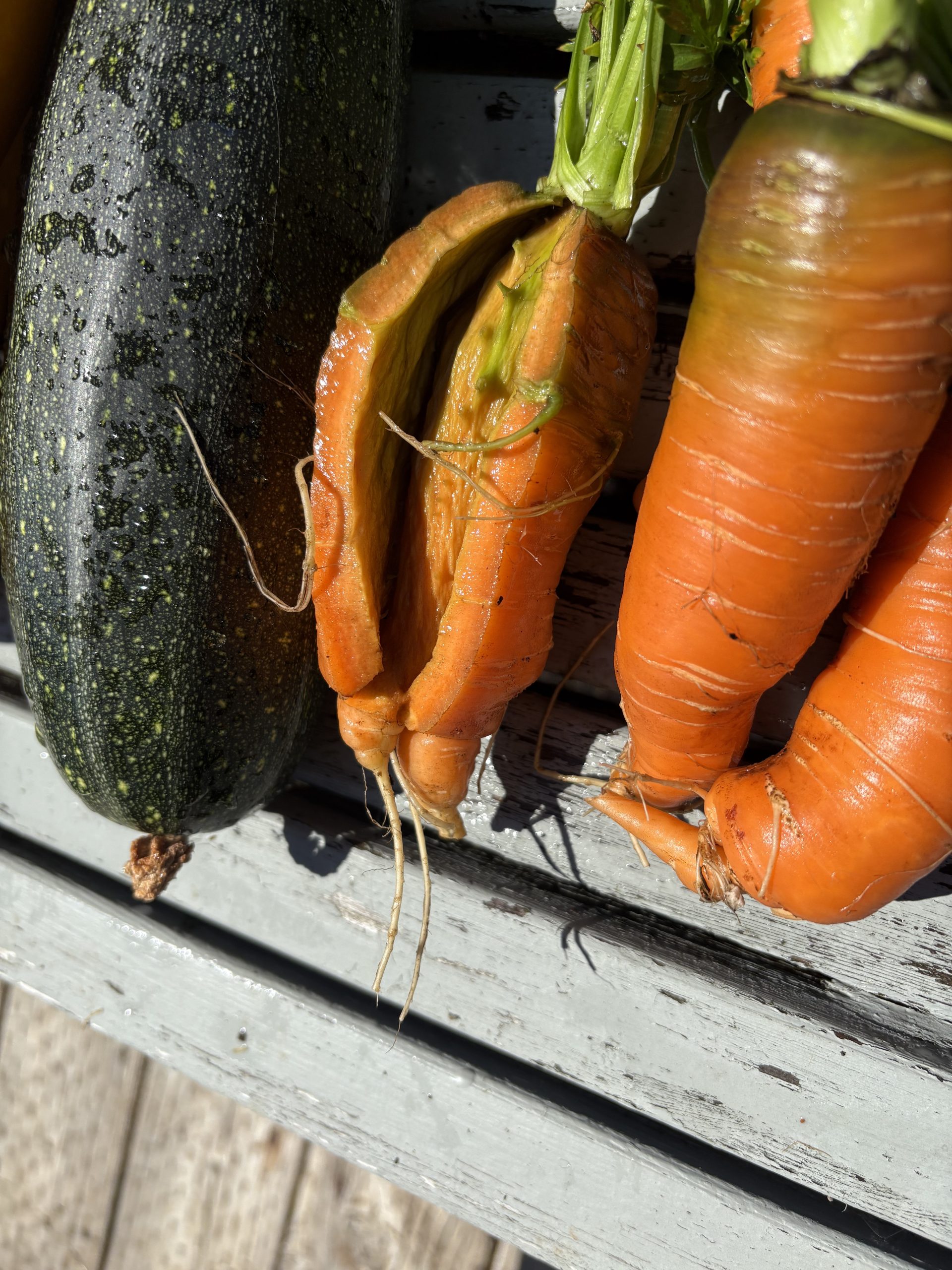
These carrots were not quite ready… Although we’re not sure what happened to this one!
We also attempted to harvest some carrots that seemed ready to burst out of the ground, only to find that they weren’t quite ready yet. Another few weeks, and we will have some healthy carrots to share.
The summer squash pictured here will be used for zucchini bread and zucchini crisp, both of which can be purchased at our Book & Bake sale on August 10th, Herbert Hoover’s birthday. See our events page for more information. We hope to see you there!
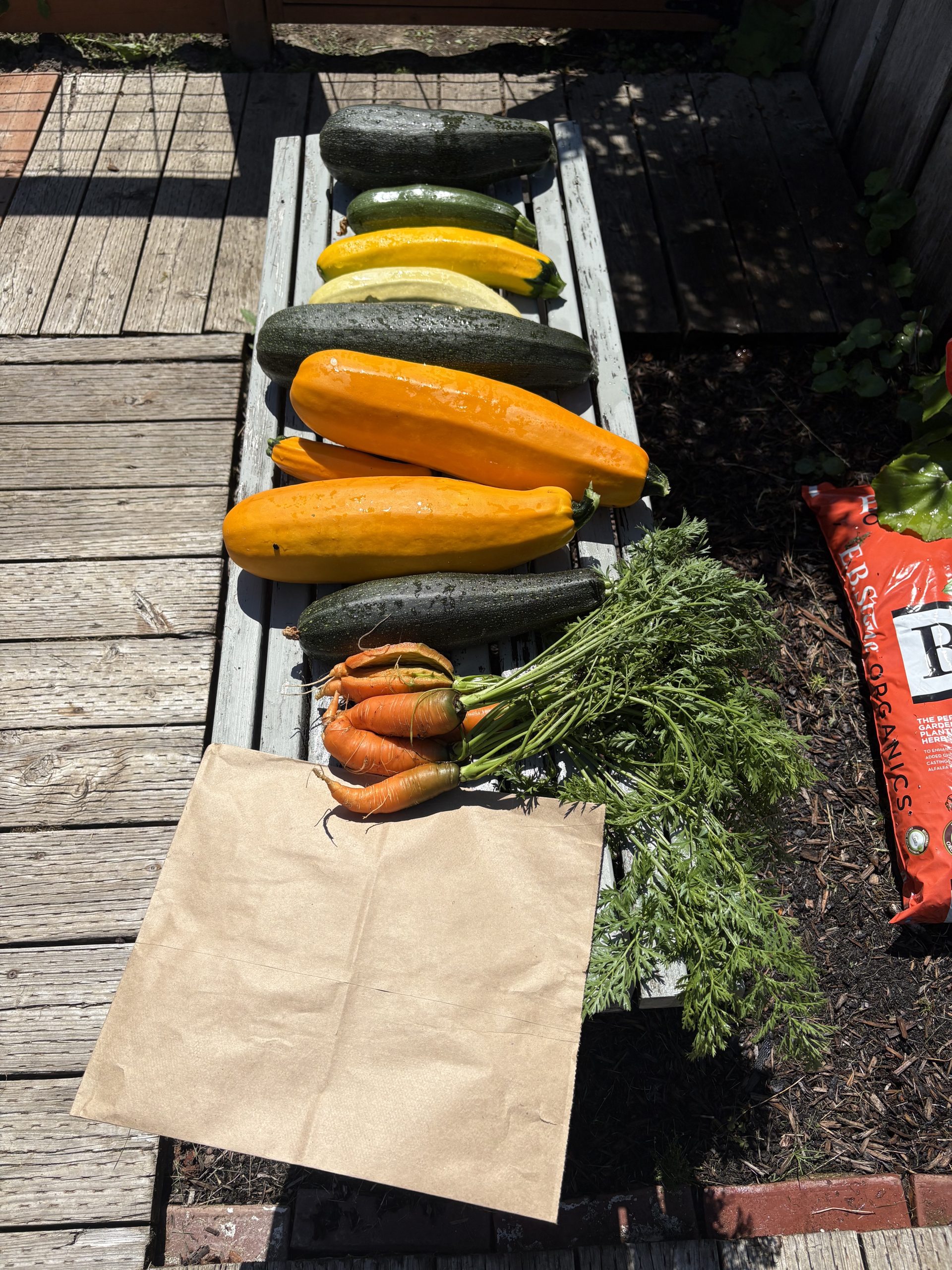
Finally, our squash harvest, paired with a normal paper grocery bag for a size comparison.
Stay tuned for more opportunities to learn about our garden and how we’re using it, such as our shrub-making and tincture-making demonstrations (dates TBD).
